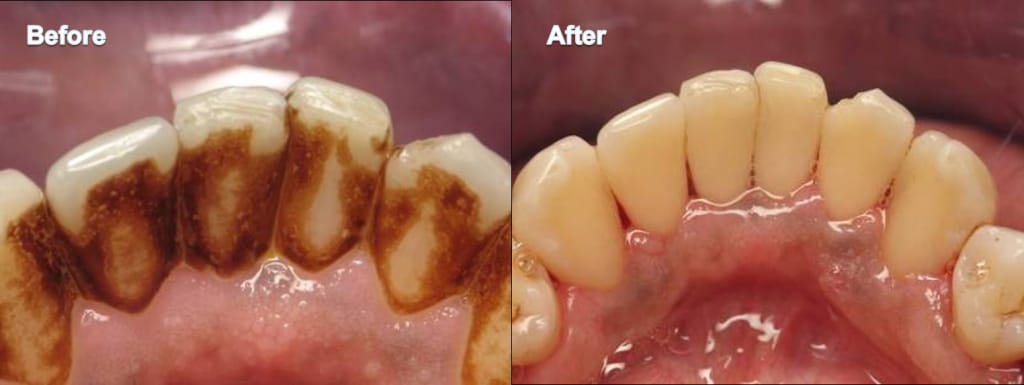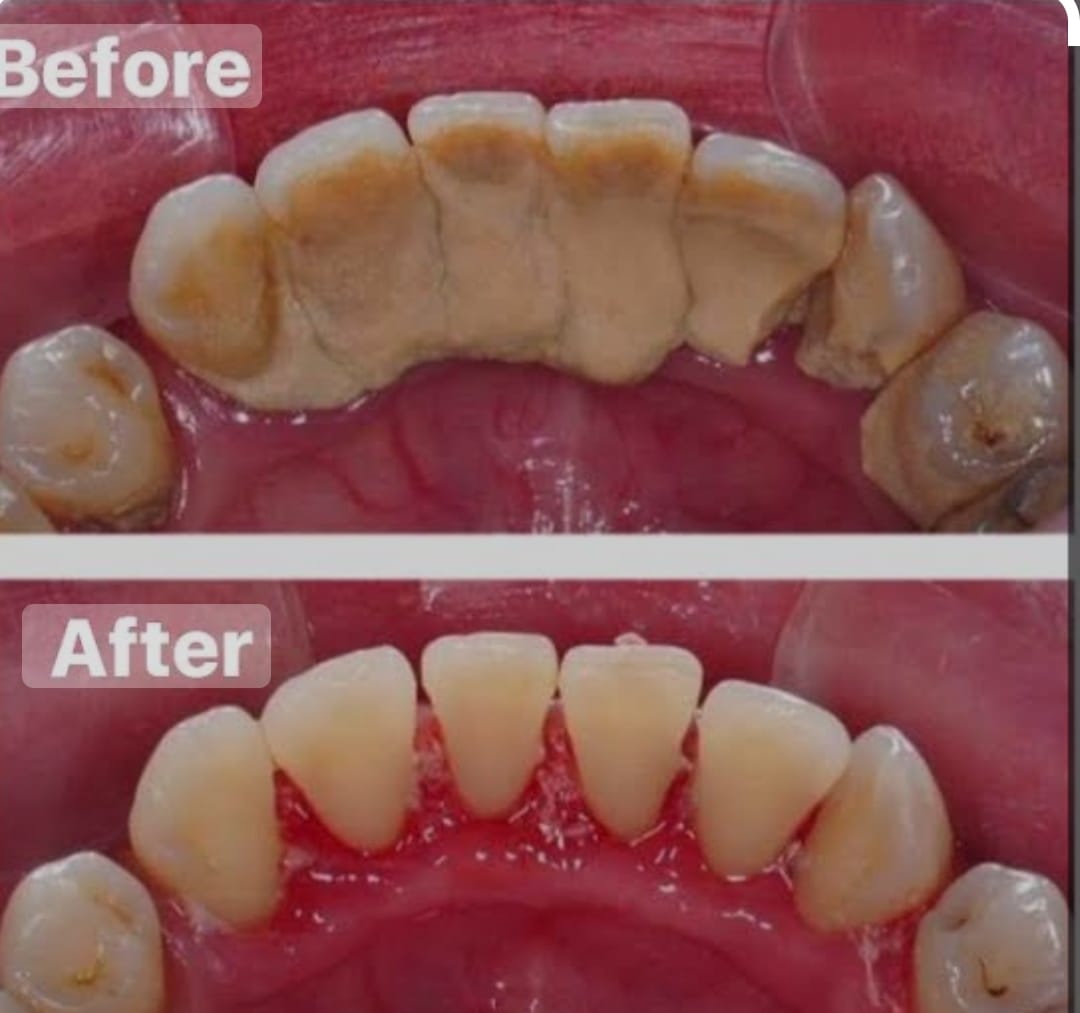Periodontics / Periodontal Disease
What is periodontal (gum) disease?
Periodontal disease is an infection that affects the gums and the underlying bone which supports the teeth. Bacteria are the cause for this infection. Bacteria are always present in the mouth and accumulate on the tooth surfaces after meals and drinks. They form a soft mass called "plaque". Plaque is usually removed through regular tooth cleaning (brushing and cleaning between the teeth). However, if some plaque remains, an inflammation of the gums may result (red, swollen gums). This inflammation, if not treated, can progress to periodontal disease (periodontitis). Where periodontal disease occurs, the bacteria grow down below the gum margin along the root surface. The gums detach from the tooth and form so called “pockets”. As a result, the bone surrounding the teeth will retract away from the source of infection. With increasing bone destruction the tooth will lose its support. If this is left untreated it can lead to tooth loss.


Are there other factors contributing to periodontal (gum) disease?
Smoking is a true risk factor for periodontal disease. Studies have shown that periodontal disease sufferers who smoke tend to have higher numbers of deep gum pockets and lose more teeth than non-smokers. Stress and genetic factors may also aggravate periodontal disease. Diabetes mellitus has been shown to be linked to a higher risk of periodontal disease occurrence. Increasing evidence supports an association between periodontal disease and other (systemic) diseases or complications, e.g. cardio-vascular diseases, pre-term low birth weight delivery. Treatment of periodontal disease could be beneficial in this respect.
How can you notice periodontal (gum) disease?
The patient and/or dental professional can see that the gums are red, possibly swollen and tend to bleed easily. Often, however, the patient may only notice minor discomfort and the condition may remain “silent” for many years. Too often, patients may notice the problem only when the bone around the teeth has so much decreased that one or several teeth become loose. The disease is diagnosed by measurement of the gum around each tooth together with x-ray images.
Can it be treated successfully?
Yes, if the disease is diagnosed early enough or there is sufficient supporting bone left. However, to succeed with the treatment, apart from following the proposed treatment plan, you would also have to carry out good daily oral hygiene in order to keep away harmful bacteria. In addition, particular risk factors (such as smoking) need to be controlled and you will need to see the dental hygienist in regular time intervals as recommended. Failure to do so will not guarantee maintaining a good result.
What does the treatment consist of?
The first phase of treatment will consist of deep cleaning of the root surfaces below the gum level (usually with local anaesthetics). This will reduce the level of inflammation and the depth of the pockets. Some time after, at the re-evaluation, the response to the initial therapy will be measured.
For many patients deep cleaning will be sufficient to control the disease. However, in advanced cases of periodontal disease with a large number of deep pockets the improvement after deep cleaning alone may not be enough. A second phase of therapy may include minor gum surgery to gain access to deep areas for cleaning.
Periodical tooth cleanings (every 2-4 months) should be carried out throughout the course of treatment. A final assessment will evaluate the result after the second phase of treatment. As soon as the condition is considered stable the patient will go back to the regular care by the dental hygienist (every 3-6 months) with periodic check ups by the periodontist/general dental practitioner.
Are there adverse effects of the treatment?
The reduction of the depth of the pockets is likely to show in the form of some gum recession (root exposure) which can vary greatly in its extent. This is inevitable in cases where the gum was very swollen in the first place. The visible recession resembles the shrinkage of a healing gum which was previously swollen. In some patients this may cause increased sensitivity. However, this is usually temporary and rarely lasts more than a few weeks/months.
Will I be able to retain my teeth for life?
If you have undergone a complete course of periodontal treatment and keep up with good oral hygiene and hygiene appointments you are likely to have a stable condition. If you fail to do so you are likely to have ongoing gum disease.
All patients who have suffered from periodontal disease at some stage in their lives are at higher risk of experiencing an episode of gum disease again at a later stage. However, periodontal treatment followed by good home tooth cleaning and regular hygiene appointments will reduce this risk significantly. You should also control other risk factors if possible, e.g. stop smoking.